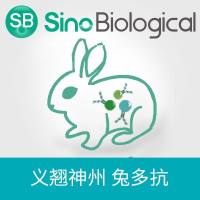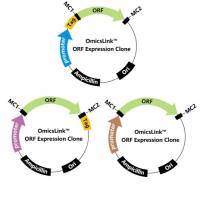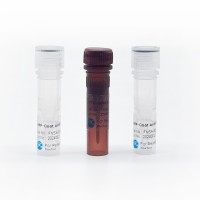Whole-mount in situ hybridization for the detection of RNA in C. elegans embryos
互联网
Adapted from Seydoux, G. and Fire, A. (1995). Whole-mount in situ hybridization for the detection of RNA in C. elegans embryos. In C. elegans: Modern Biological Analysis of an Organism. Methods in Cell Biology (ed. H. Epstein and D. Shakes) Academic Press, San Diego.
I. Materials
A. Reagents
- Anti-digoxigenin Fab fragment, rhodamine labeled (Boehringer Mannheim Cat# 1207 750)-
Anti-digoxigenin Fab fragments, alkaline-phosphatase labeled. (Boehringer Mannheim Cat# 1093 274)-
BSA (Fraction V, Sigma Cat# A-7906)-
Commercial Bleach (5.25% Sodium hypochlorite solution, Clorox)-
DAPI (Sigma Cat# D-1388)-
DNA from salmon testes (Sigma, Cat# D-1626) -
Formaldehyde (37%, Fisher, Cat# F79-500)-
Formamide (Boehringer Mannheim Cat# 100 731)-
Glycerol (Boehringer Mannheim Cat#100 649)-
Glycine (Sigma Cat# G-4392)-
Glycogen (Boeringher Mannheim Cat# 901-393)-
Heparin (Sigma, Cat# H-3393)-
Hepes (Boehringer Mannheim Cat# 242 608)-
Levamisole (Sigma, Cat# L-9756) -
NaN3 (Sigma Cat# S-2002)-
NBT: 4-Nitro blue tetrazolium chloride. (Boehringer Mannheim Cat# 1383 213)-
p-Phenylenediamine (Sigma Cat# P-6001)-
0.1% Poly-L-lysine solution (Sigma Cat# P-8920). -
Polyoxyethylene-Sorbitan Monolaurate (Tween 20; Sigma Cat# P-1379)-
Proteinase K (Boehringer Mannheim, Cat# 161 519)-
Taq DNA polymerase (Promega Cat# M1861)-
Tris (Boehringer Mannheim Cat# 604 205, 812 854)-
Triton X-100 (Sigma Cat# X-100) -
X-phosphate: 5-Bromo-4-chloro-3-indolyl-phosphate. (Boehringer Mannheim Cat# 1383 221)
B. Stock solutions
DEPC treatment of solutions is not needed. Solutions are stored at -20oC unless otherwise indicated.-
10x dNTP mix: Digoxigenin-11-dUTP pre-mixed with other nucleotides (1 mmol/l dATP, 1 mmol/l dCTP, 1 mmol/l dGTP, 0.65 mmol/l dTTP, 0.35 mmol/l DIG-dUTP). (Boehringer Cat# 1277 065.) -
10x PBS: 80g NaCl, 2g KCl, 6.1g anhydrous Na2HPO4, 2g KH2PO4, H2O to 1 liter. Autoclave and store at room temperature.-
10x Taq Buffer: 500 mM KCl, 100 mM Tris-HCl (pH 9.0 at 25oC), 1% Triton X-100. -
20x SSC: 3 M NaCl, 0.3 M Na3Citrate-2H20. Store at room temperature.-
Mounting media: 70% glycerol, 1mg/ml p-phenylenediamine (pH 9).
C. Working solutions
These solutions are prepared on the day of use.-
Formaldehyde fixative solution: 1X PBS, 0.08 M Hepes (pH 6.9), 1.6 mM MgSO4, 0.8 mM EGTA, 3.7% formaldehyde.-
Hybridization buffer for cDNA-derived probes: 100 µg/ml autoclaved salmon sperm DNA, 50 µg/ml heparin, 0.1% Tween 20, 50% formamide, 5 X SSC.
[ If you are using Wheaton jars that hold up to 20 slides in 150 ml, you will need a total of 1 liter of HYB buffer for the pre-HYB and post HYB washes:
Prepare 1 liter of HYB buffer omitting the DNA.
Aliquot HYB into 4 bottles as follows:
- 400ml in one bottle labeled HYB w/DNA. Add 4ml of 10mg/ml ssDNA to that aliquot.
- 360ml in one bottle labeled HYB wash
- 180ml in one bottle labeled 3:2. Add 120ml of PTw to that aliquot.
- 60ml in one bottle labeled 1:4. Add 240ml of Ptw to that aliquot.]-
Hybridization buffer for oligonucleotide probes: 100 µg/ml autoclaved salmon sperm DNA, 50 µg/ml heparin, 0.1% Tween 20, and appropriate concentrations of formamide and SSC as described in section III D.-
Hypochlorite solution: 1N NaOH, 1:10 dilution of commercial bleach. -
PBT: 1 x PBS, 0.1% BSA, 0.1% Triton X-100-
PTw: 1 x PBS, 0.1% Tween 20-
Staining solution: 100 mM NaCl, 5 mM MgCl2, 100 mM Tris, pH 9.5; 0.1% Tween 20; 1mM Levamisole. Levamisole is a potential inhibitor of endogenous phosphatases.-
TTBS: 150mM NaCl, 50mM Tris-HCl pH 7.8, 0.1% BSA, 0.1% Tween-20
E. Slides and other materials
- Carter's rubber cement (Dennison Stationary Products).-
Coverslips for freeze-cracking (No. 11/2; 24 x 50mm; Thomas Scientific Cat# 6663K94)-
Incubation dishes. Unless otherwise noted, all washes and incubations are done in Wheaton staining dishes (Thomas Cat# 8541-H15), which can hold 20 slides in 150 ml.-
Parafilm squares cut to 20 x 20 mm. -
Slides (75 x25mm) [Cel-Line Associates Inc. (tel: 1-800-662-0973), Cat# 10-2066, brown autoclavable coating]. These slides have 3 square wells (14x14mm) surrounded by a thin hydrophobic coating similar in thickness to a C. elegans embryo. This coating supports the coverslip during freeze-cracking and facilitates incubation with small volumes of staining solutions. Only the two outside wells are used. Wells are subbed with poly-lysine on the day of use: 50 µl of poly-lysine solution is allowed to settle on slides for 10-20 min; excess solution is wiped off and slides are baked at 60oC for 10 min.
II. PROCEDURE
A. Overview.
A mixed population of C. elegans embryos is attached to microscope slides, permeabilized by freezing and fixed with methanol and formaldehyde. Embryos are then incubated overnight with a digoxigenin-labelled single-stranded DNA probe, followed by extensive washes to remove excess probe. Fluorescent or enzyme-linked anti-digoxigenin antibodies are used to visualize the hybridized probe. The entire procedure requires approximately 1.5 days from harvest of embryos to probe visualization.
This protocol is designed for embryos, but can also be used for larvae/adults. Best results have been obtained when looking at RNAs expressed in the adult germline, but some somatic RNAs have also given nice patterns. Modifications necessary to work with larvae/adults are described in section D.
[1] [2] [3] [4] 下一页









